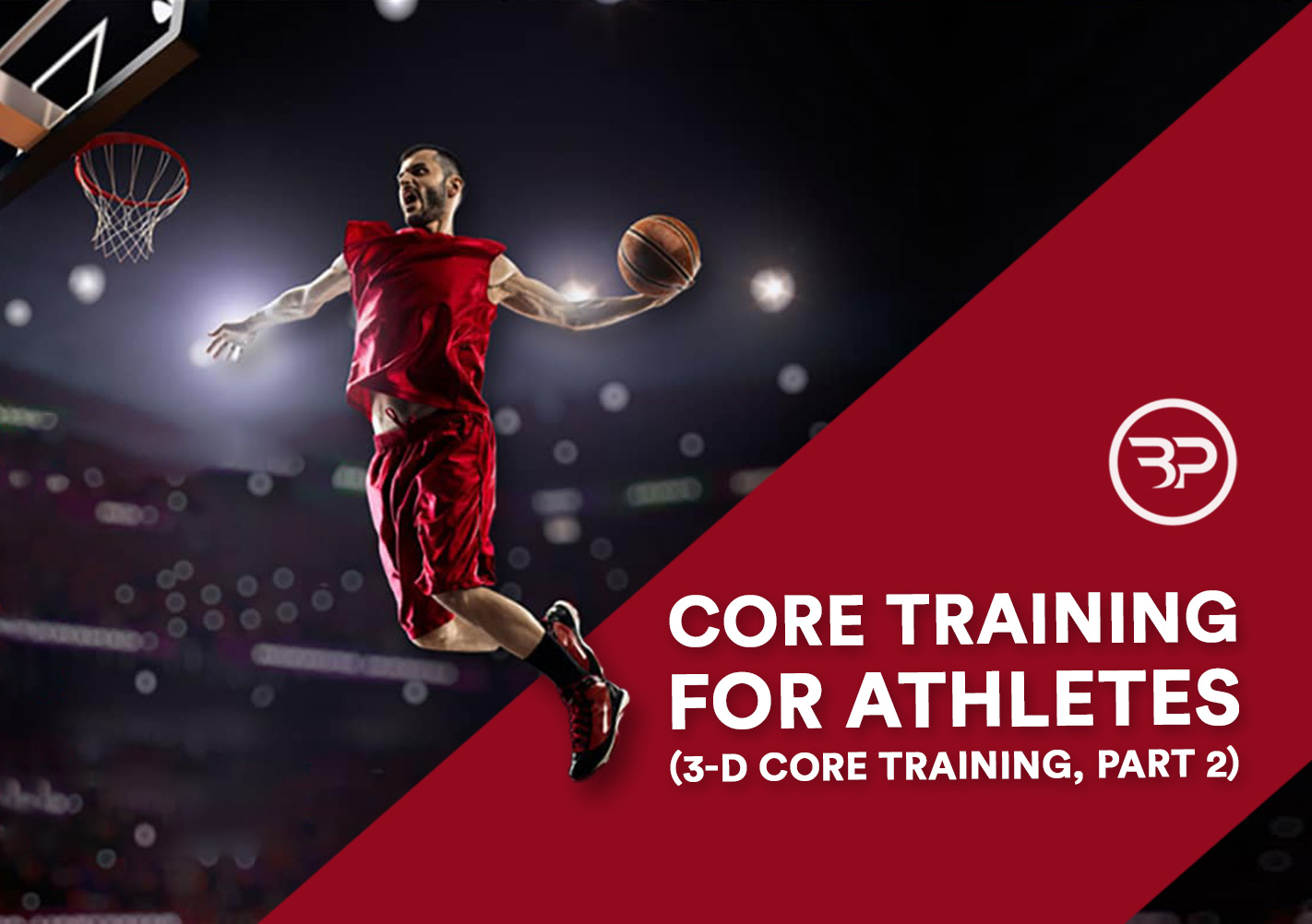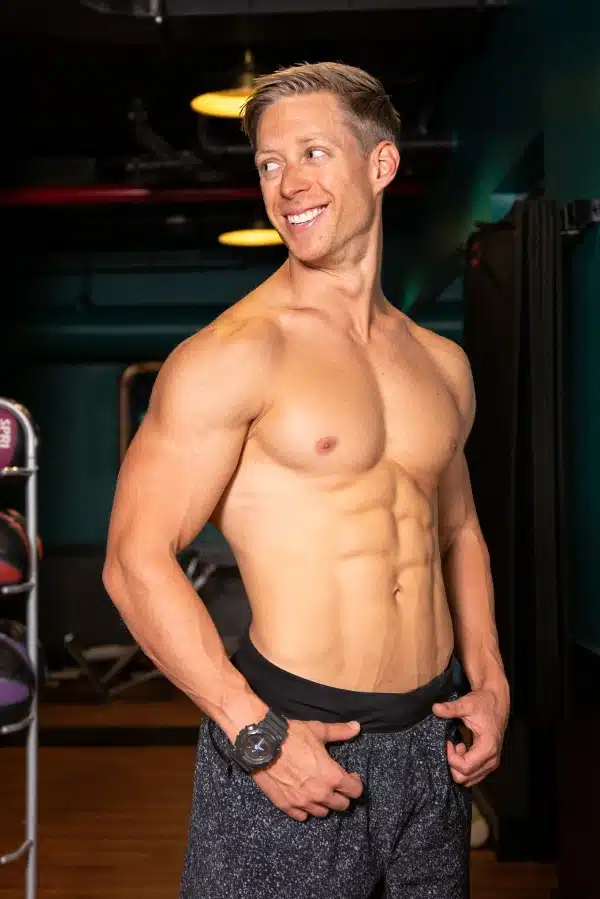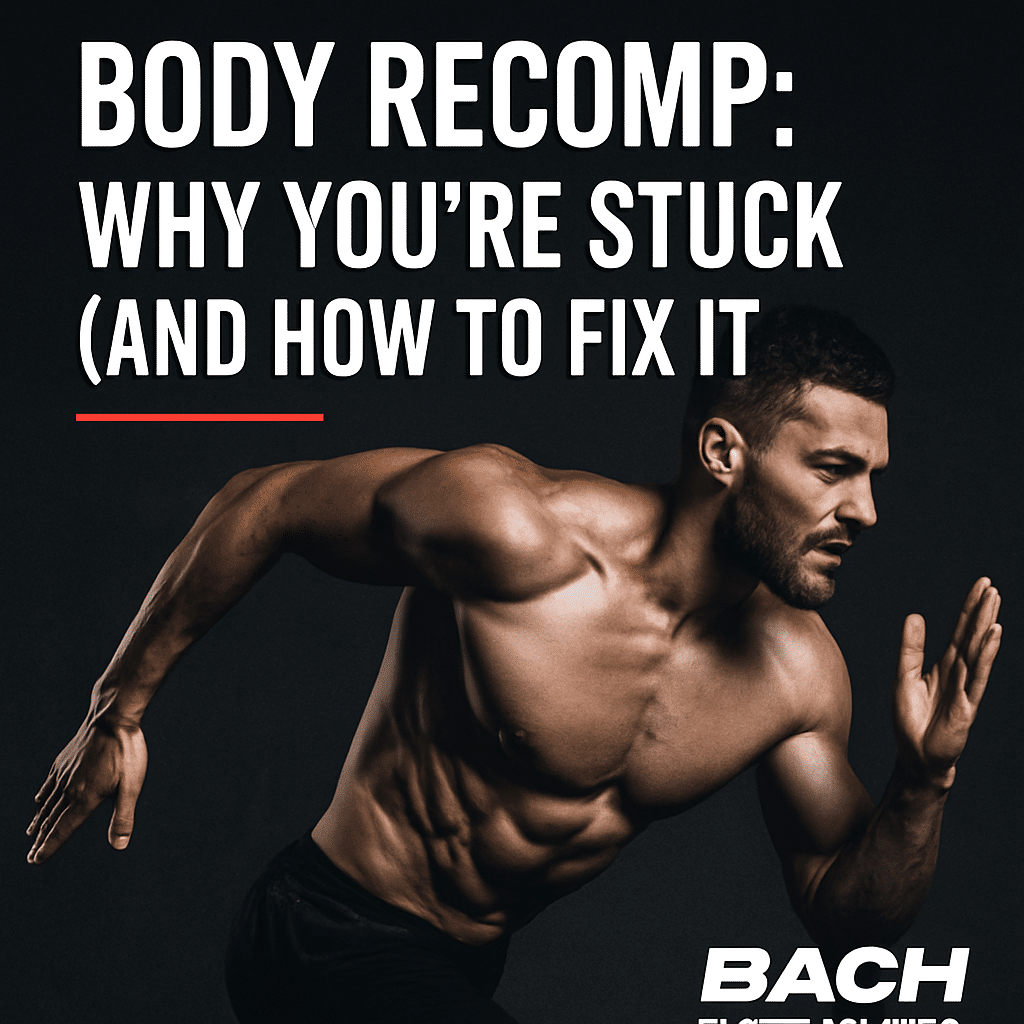Core Training For Athletes (3-D Core Training, Part 2)
May 22, 2018
Training your core is one of the best ways to prevent injury, as I wrote in part one of this series, which you really need to read. (Trust me on this one.)
Without a strong core you’ll never optimize your performance or health… or look better naked.
Today brings the second part of triple-threat core training: training for performance.
Once your core is strong, stable and able to handle the daily grind, it’s time to kick things up a notch. After all, there’s more to “core” training than planks and preventing back pain. You also want to kick ass in the gym and (if it floats your boat) on the playing field.
Here are exercises that will help you be stronger in the gym and play better everywhere from the basketball court to the squat rack to the back nine. Better yet? You’ll be able to carry all the grocery bags in one trip.
Core Training For Performance Basics
The demi-god of core training Dr. McGill writes that “proximal stiffness enhances distal mobility and athleticism.” In other words, when your core is strong and stiff, you can generate more speed and power with your arms and legs.

That means you’ll be stronger in the squat or pushing weight overhead.
That translates to force into the ground when sprinting, a harder swing on your tennis serve, and better leaping ability when showing off for friends.
Why?
Think about the difference between walking across concrete and walking across a row of pillows. The hard concrete surface allows you to push off forcefully. The pillows? You sink in as the softness causes forces to deflect in competing directions.
This loss in force is called an energy leak. A weak core is a significant energy leak and won’t allow you to train intelligently (and aggressively) as you need to build a high-performance body.
There are three components of training your core for better performance.
Activate Muscles With Your Anti-Movements
First, activate deep muscles with the “anti-movement” we discussed in last week’s article. Read it here, bruh. They’ll help you resist unwanted movements, button up any energy leaks, and prepare your body to perform.
Here’s an example of the half kneeling pallof press.
Integrate Compound Lifts for #Gains, ya know?
Second, integrate total body compound exercises like squats, deadlifts, chin-ups, overhead presses, lunges, and weighted carries. You’re only as strong as your weakest link. If your core is weak? You’ll either end up injured or reducing the amount of weight you can use on lifts like squats and deadlifts. This, in turn, limits the training response for your legs.
Upper body pressing exercises like push ups, dips, overhead presses, and pulling exercises like rows and chin-ups are also great. They develop power and strength and help you build core stiffness that won’t buckle under load.

Your core should remain braced as you move, providing a rock-solid foundation that holds your spine’s position and doesn’t folk like an accordion during exercise. In other words: a great abs workout means doing more than just abs exercises. You need to include compound, multi-joint exercises, too.
Weighted Carries
Weighted carries provide limitless options.
Heavy dumbbells, a trap bar, or (if your gym is cool) farmer’s walk handles are some of the best tools for building a strong, high-performance core. Whatever carry you use, brace your abs for the entire set. Brace your abs like someone’s going to poke your belly, and stand tall.
Hold this position, stay tall, and breathe into your stomach for the set. The carry will force your deep intrinsic core muscles to stabilize your hip and spine with every step, a term dubbed dynamic stabilization by my fellow muscle nerds. The muscles of your back lower back and abs tighten to prevent unwanted movement of your spine.

Sports Specific Core Training
Third, add sport-specific core exercises. If you’re an athlete who trains for a specific sport, you need to train movements similar to those in the sport. In other words, if you play golf, tennis, or baseball, you’ll want to work on your rotational strength, since that’s what powers your swing.
Me? I like to walk on the beach and launch busted up palm trees.
Athleticism Building Core Training
Athleticism requires muscles, joints, ligaments, and nervous system must work together as a complete unit to be strong and powerful.
One of the best tools for this? Medicine balls.
Medicine balls allow you to train sports specific movements with speed and power, similar to how you would in a sport. Note: You shouldn’t try any goofy tom-foolery like weighted golf club swings or using weight on technical movement patterns. You’ll only mess up the timing and coordination of those exercises. Instead, stick to medicine balls and other tools to develop similar power.
Here are four rotational strength-building exercises that use a medicine ball:
Rotational Scoop Throw, three sets x 5 reps per side
Stand perpendicular to an open area or a solid wall with your feet shoulder-width apart, and knees slightly bent. From this position, while holding the ball to your back hip, shift your weight to the back leg before explosively shifting your weight to the front leg and throwing the ball as hard as possible. Repeat for three sets of five reps per side.
Medicine Rainbow Slam, three sets x 5 reps per side
Stand with your feet shoulder-width apart while holding a medicine ball overhead with your arms extended. Rotate and slam the ball outside your opposite foot. Catch the ball and reverse the range of motion for three sets of five reps per side.
Overhead Medicine Ball Slams, three sets x 5 reps per side
The overhead medicine ball slam builds incredible power through your shoulders and lats while preventing flexion through your spine. Stand up tall with your feet hip-width apart. Hold the medicine ball in both hands. Raise the ball overhead, then slam it as hard as you can on the ground. Catch the ball on the bounce and repeat. Try the overhead medicine ball slam before doing upper body lifts like shoulder presses or chin-ups.
Medicine Ball Back Tosses, three sets x 5 reps per side
The medicine ball back toss builds explosive hip extension power, such as exercises like jumps and cleans but with less joint stress.
Stand with your feet slightly wider than shoulder-width apart, holding a medicine ball overhead with your arms straight. Drop it like it’s hot between your legs, before exploding upward to jump out of the squat while you raise your arms overhead to throw the ball at you. The ball should arch high and far.This explosive movement works best to build explosive hip extension power and works well before lower body training lifts like a squat or deadlift.
Medicine balls are a great tool for building pain-free power, especially if you’re not using the Olympic lifts lift cleans.
Medicine Ball Exercises For Power and Performance
To maximize performance incorporate medicine ball throws at the beginning of your workout after a warm-up but before your main strength movement. Pick one that matches your performance goals and adds them twice per week.
Don’t race through the reps. Instead, focus on generating as much power on each rep as needed. Rest about a minute, and repeat. Three sets of five reps are fine.
Medicine Ball Exercises For Conditioning and Performance
If hobbling along the treadmill sounds like as much fun as walking on hot coals, consider medicine ball circuits. By using explosive movements for long-duration sets, you’ll build power, endurance, and torch every muscle from head to toe.
Pick two or three movements and do three sets of 30 seconds each. Perform all the exercises back to back, rest a minute, and repeat.
That’s a wrap for today. Remember, the first key to performance is prevention; Then, your core training needs to be specific to your sport or goal. Stay tuned for next week when we cover how to get aesthetic, panty droppin’ abs.
Or…you could get started right now. With the Power Primer workout, you’ll have the perfect 16-week blueprint to build a strong, lean, and athletic body without beating up your joints. Grab your copy here today.










[…] Source link […]